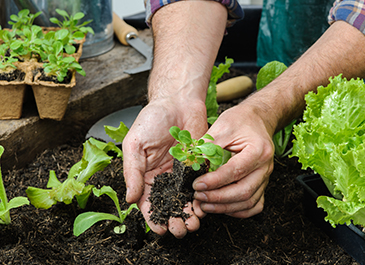It’s easy to get swept away by gardening fever early in the season. Over the years I’ve learned to prune my efforts so that it’s possible to have an edible garden that still allows time for other summer activities. Here are my tips for how to plan your garden so that it becomes fulfilling but not overwhelming.
Be realistic with your time and energy
• Make a note of the annual plants you and your family love to eat and only grow these
• Grow perennial vegetables
• Mulch to greatly reduce weeding and watering
• Grow the fruit and vegetables that cost the most to buy or are the hardest to find in the stores or farmers’ markets
Consider your purpose for the garden
Is it for pleasure, food or a combination of both? If you want a combination, then here’s how you can do it. Combine annual vegetables with low-maintenance perennials. Perennials are plants that return on their own every year. A lot of time and money can be saved as seeds and seedlings only need to be bought and planted once. Perennials can include long-blooming flowers, vegetables, fruits and groundcovers.
My top perennial vegetable recommendations include asparagus, French sorrel, chives, rhubarb, garlic and Egyptian walking onions. Greens that reseed themselves and come back every year are equally low-maintenance and can also work as groundcovers. Such greens include arugula, corn salad and our native claytonia (miner’s lettuce). For fruit, try combining fall- and summer-bearing raspberries to extend the raspberry season, and plant ever-bearing (day-neutral) strawberries if you don’t have time to harvest June-bearing strawberries every day.
Place high maintenance activities and plants closest to the home
Reassess your garden’s functionality. Place the activities and plants that require the most harvesting or maintenance in the area where you spend the most time. This reduces time spent walking to and from the garden or compost, reminds and encourages you to harvest more frequently, and makes maintenance easier and potentially more enjoyable.
Let’s take my home edible garden as an example. It’s closest to my regular path in and out of the side door and is also right next to the kitchen. When meals demand fresh greens, berries or herbs, it takes less than a minute to grab the scissors and harvest. Annual flowers for beauty are also placed here so that dead-heading can be done more frequently and more easily.
If we take these steps to reduce the energy needed to grow food, we can benefit from not only the abundance of produce but also from the immense joy gardening can bring. The old adage “more effort equals more reward” can finally be put to rest…ideally under some mulch somewhere.
Elana Westers is the owner of Growing Inspired, an Okanagan company offering eco-landscape design and education services. Elana is a trained permaculture and sustainable product designer and helps to run the Kelowna Public Food Forest. To learn more or to schedule a consultation, visit growinginspired.com.

